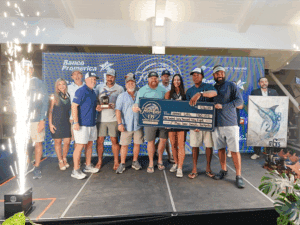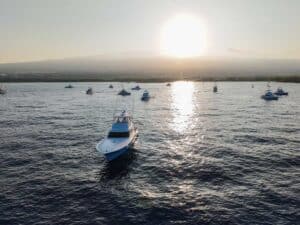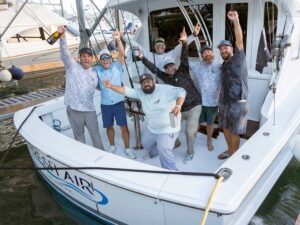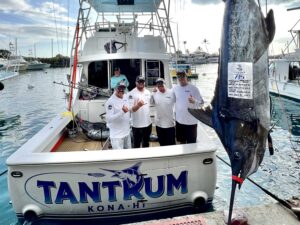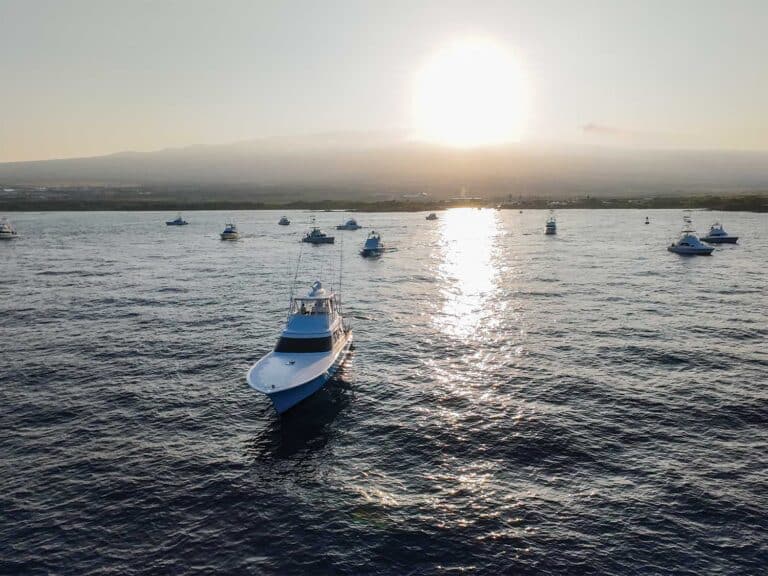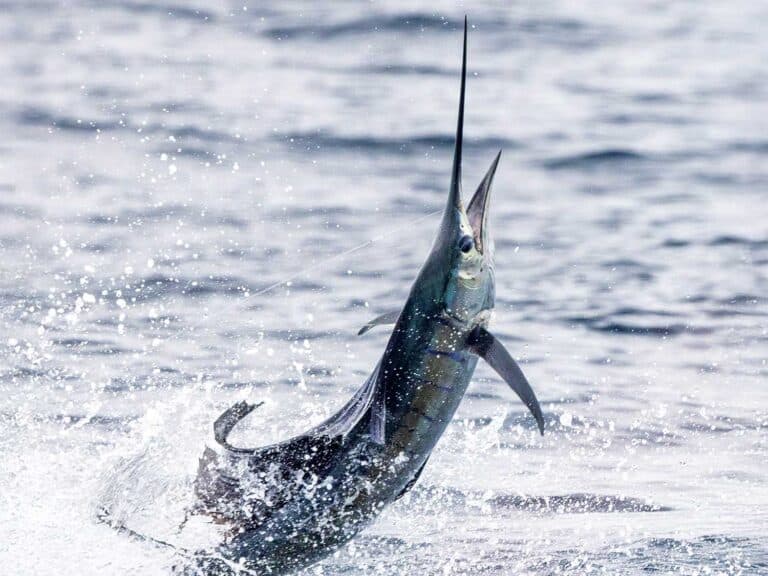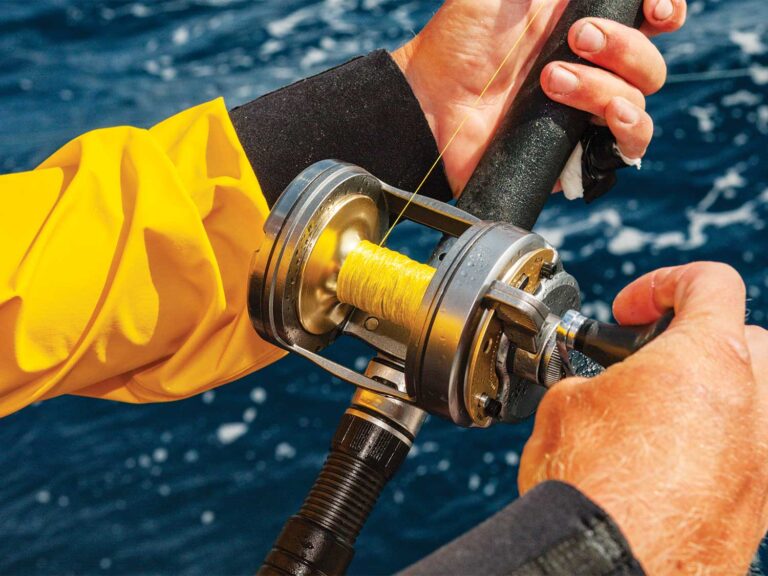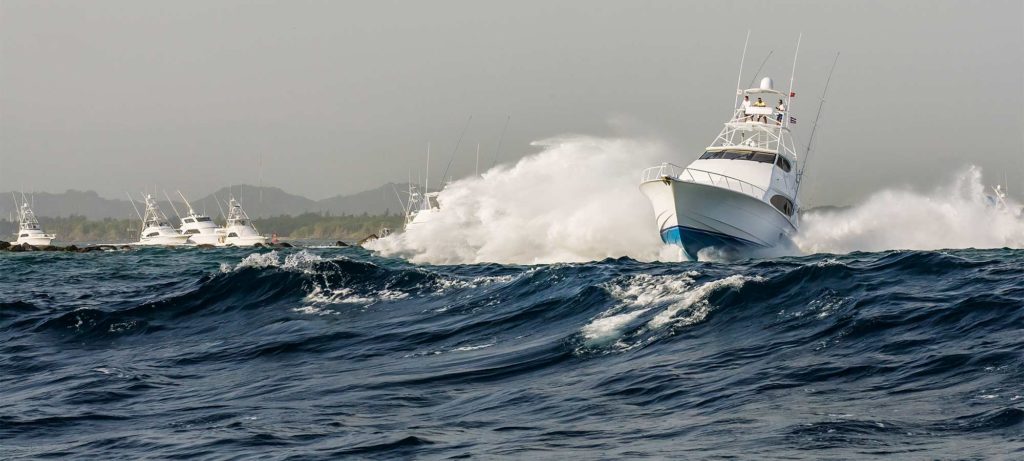
To many participants — as well as casual observers — those are the two main criteria by which successful big-game tournaments are judged. But there are other benchmarks aside from 500-pound marlin and six- or even seven-figure payouts. Months before the first lines ever touch the water, countless details must be handled. Rules are finalized and a plethora of logistical aspects must be readied, none of which could be accomplished without long hours and innumerable phone calls, texts and emails, plus gallons of sweat equity by the staff and a small army of volunteers. The majority of this preparation and execution occurs behind the scenes, far from the flash of camera strobes. And planning for next year’s event begins before the current contestants ever pull out of their slips.
“We have upwards of 50 volunteers, most of them local,” says Virginia Beach Billfish Tournament volunteer coordinator Ed Szilagyi. “We recruit by word of mouth, mostly. But we also hold them hostage with the promise of free food and booze,” he adds with a laugh.
Before the kick-off of the 2018 event in Virginia Beach, Virginia, Szilagyi and several volunteers are busy hauling ladders and pushing a scaffold around the massive tournament tent hanging sponsor banners.
“I’ve never counted all the banners, but it’s a bunch,” he says. “They go all around the perimeter of the tent and we also have two wires suspended from the ceiling with more. They all have to be put up and then taken down when it’s all over.”
While the banner brigade is in action, other volunteers scurry around with boxes of merchandise, counting and folding T-shirts, stuffing Yeti buckets with sponsor swag and myriad other necessary tasks.
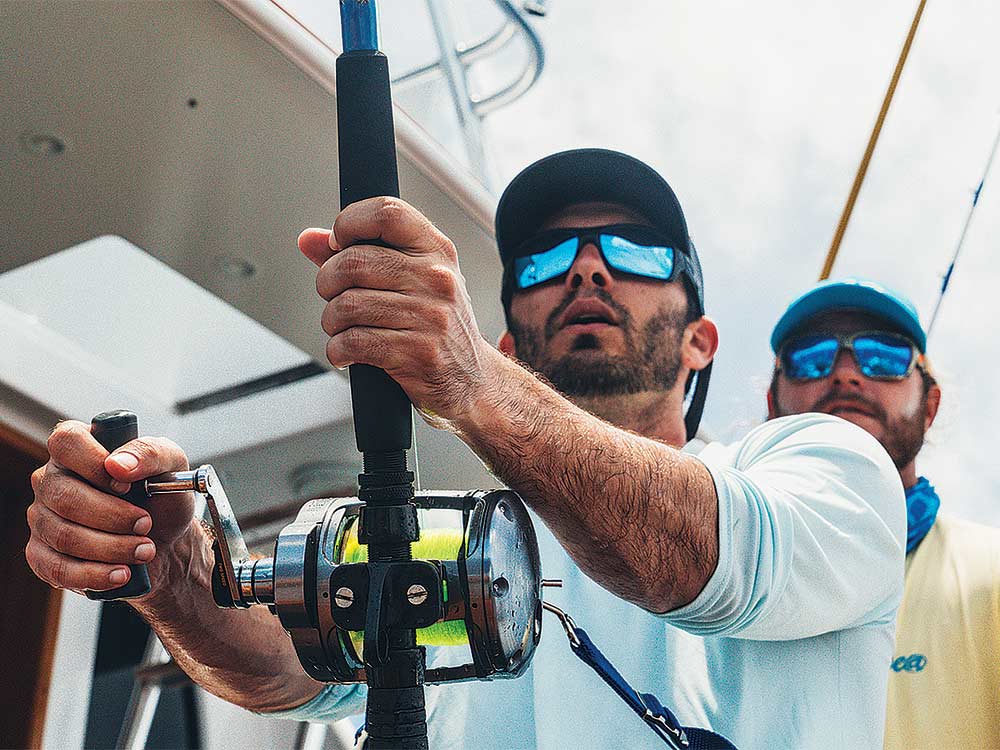
Hustle Meets Bustle
VBBT marketing director Deirdre Bell solicits sponsors, charity donations and produces the tournament magazine long before the actual competition begins. As the kick-off approaches, she deals with a seemingly endless list of last-minute details. All must be addressed to host a successful invitational event like the VBBT, which has a lengthy waiting list of potential entrants every year. Once the tournament starts, volunteers will work registration tables to check in teams and distribute all those items. Others will be selling merchandise, charity raffle tickets and manning silent-auction tables. Still more will be helping at the weigh station with scoring or data entry for the live leaderboard and social media updates. Another volunteer rides aboard a different tournament boat each day to relay catch reports from offshore via satellite radio.
“Contractors erect the tent earlier in the summer and then we have more technicians come in to set up the sound system, lighting, generators and all the fundamental stuff early in the tournament week,” says VBBT director Paula Owen. “Then we handle the rest.
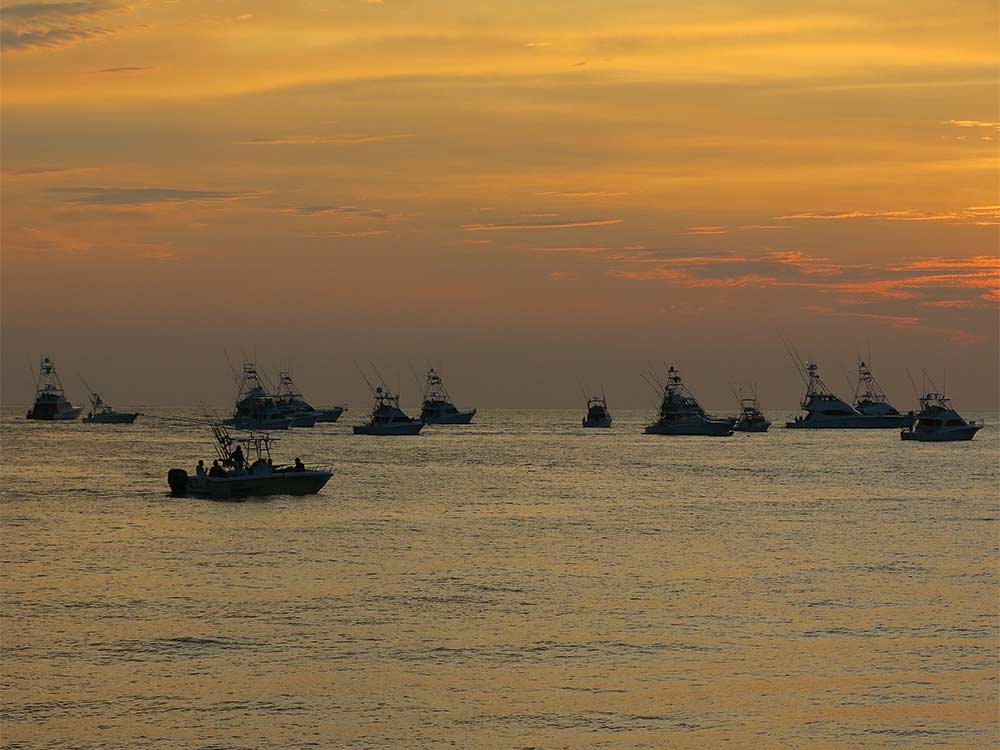
“We serve an average of 750 meals nightly to the participants,” she adds. “There are more than a dozen bartenders pouring drinks and we go through pallets of water, soft drinks, beer and liquor. We buy ice by the truckload. We have more volunteers running errands, printing handouts and flyers, and picking up supplies. Volunteers from the Boys and Girls Clubs, one of our charities, collect trash and keep everything looking nice. It’s all a major undertaking, but with their help we manage to pull it off each year.”
Gulf Coast Glory
Similar scenes are repeated along the East Coast, in ports along the Gulf of Mexico and throughout Caribbean and Central American tournament hot spots such as Mexico, the Bahamas and Costa Rica. The Blue Marlin Grand Championship in Orange Beach, Alabama, is a relative newcomer compared to others with decades-long track records and yet it has quickly earned a reputation as a world-class event, thanks mainly to dedicated efforts by tournament coordinator Chris Miller, The Wharf Marina manager Beverly Morgan, CatchStat’s Dave Garcia and other staffers. Before tournament director Scott Burt ever picks up the microphone to start the captains’ meeting, sponsor displays are staged, audio-visual equipment is set up and even the entry path for the fish carts is tested, right down to the smoke tunnel and flaming-marlin special effects. The BMGC is part tournament, part rock-star show, and it is also a hell of a lot of fun.
The Mississippi Gulf Coast Billfish Classic is another favorite on the Gulf Coast circuit, celebrating its 22nd anniversary in 2019. This tournament’s staffers have years of experience running the event out of Biloxi, Mississippi.
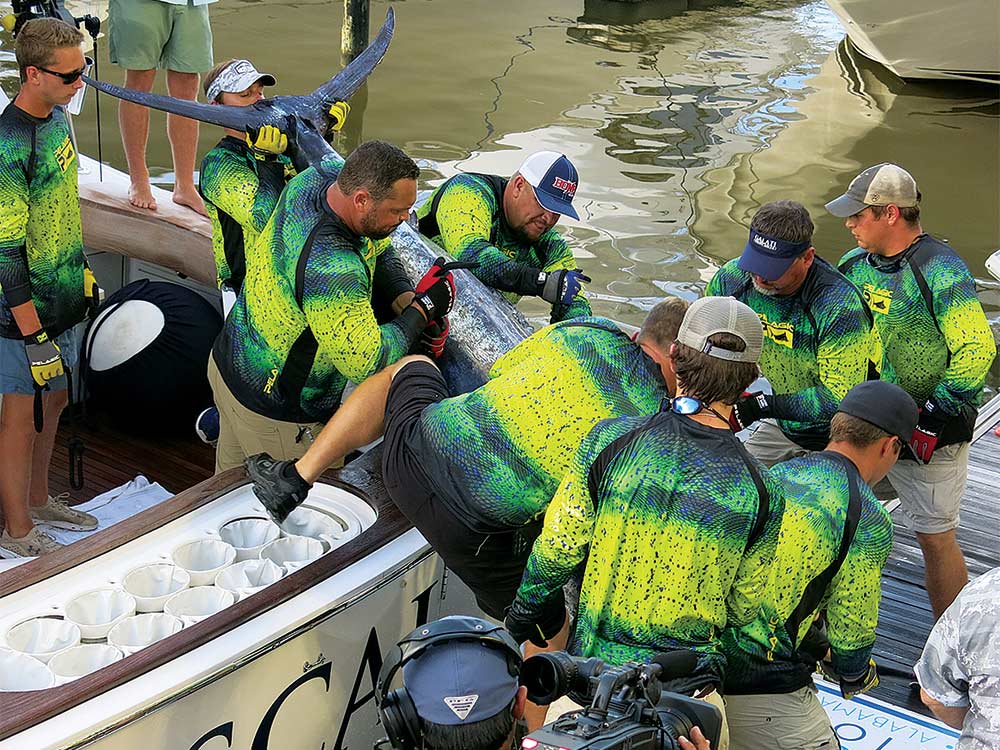
“The majority of our crew has been with the tournament since its inception,” says Chris McLellan, the event’s co-coordinator. “They all know when to do what, how to do it or who to ask. It’s a well-oiled machine. For example, my nephew Andrew McLellan has been working with us since he was 10 years old, helping stuff the boat buckets. Now he’s one of the dudes counting the optional money entries.”
The Money Dance
Registering the teams, collecting entry fees and the optional side bets are a major aspect of tournaments with several million dollars on the line. Julia Brakhage, owner of Tournament Control, has been handling the business and scoring side of the equation for events since 1990. She has worked with the VBBT and the Emerald Coast Blue Marlin Classic at Sandestin since the inception of both events, worked with the Bisbee’s Baja tournament series for 17 years and runs registration and scoring for the Pirate’s Cove Billfish Tournament in Manteo, North Carolina. She has helped manage 144 tournaments over the years, and the amount of fees and cash prizes she’s accounted for in that timespan has topped $1 billion.
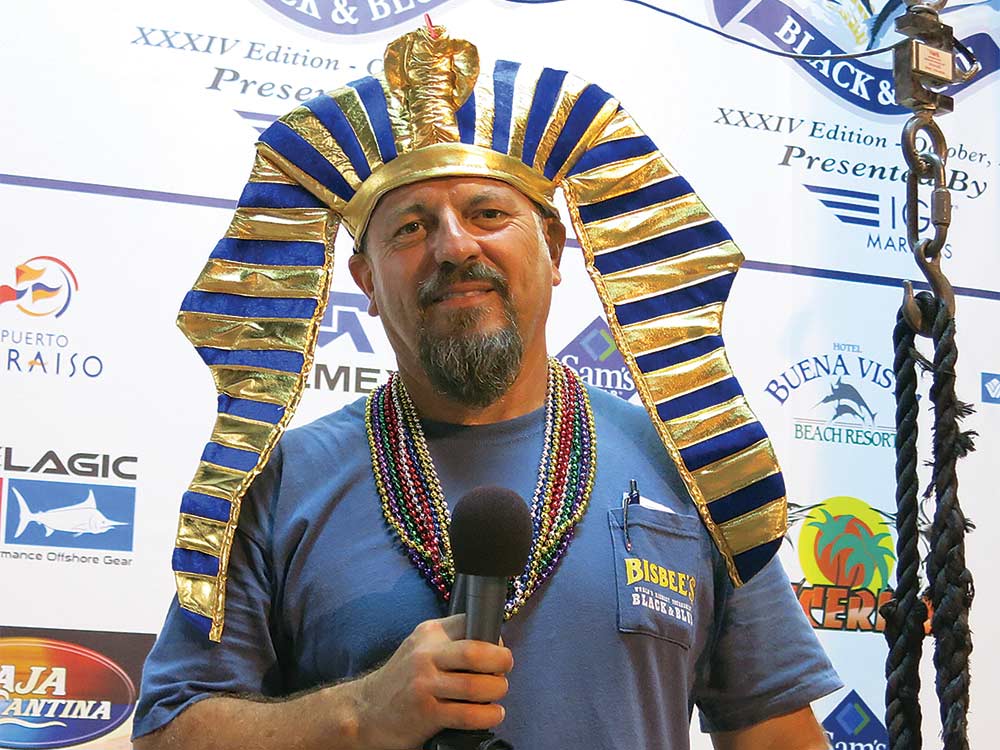
“The most daunting task is handling that much money,” she says. “You have to make sure everything has actually been collected. That includes counting cash, depositing checks, verifying credit cards and reconciling the books. The late Bob Bisbee taught me how to properly count cash years ago, how to face it all the same way and then how to brick it up. It’s different now with wire transfers and deposits, but I remember one year at the Black and Blue, we had more than $750,000 in cash on hand. Before bundling, we dumped it all on the hotel bed and rolled around in it for fun. Afterwards, we kept it in the washing machine in the room until it could be deposited in the bank.”
At Bisbee’s venues in Cabo San Lucas, armed sailors from the Mexican Navy act as security guards during the registration process. At other events, sheriff’s deputies and local police provide a visible deterrent against robbery.
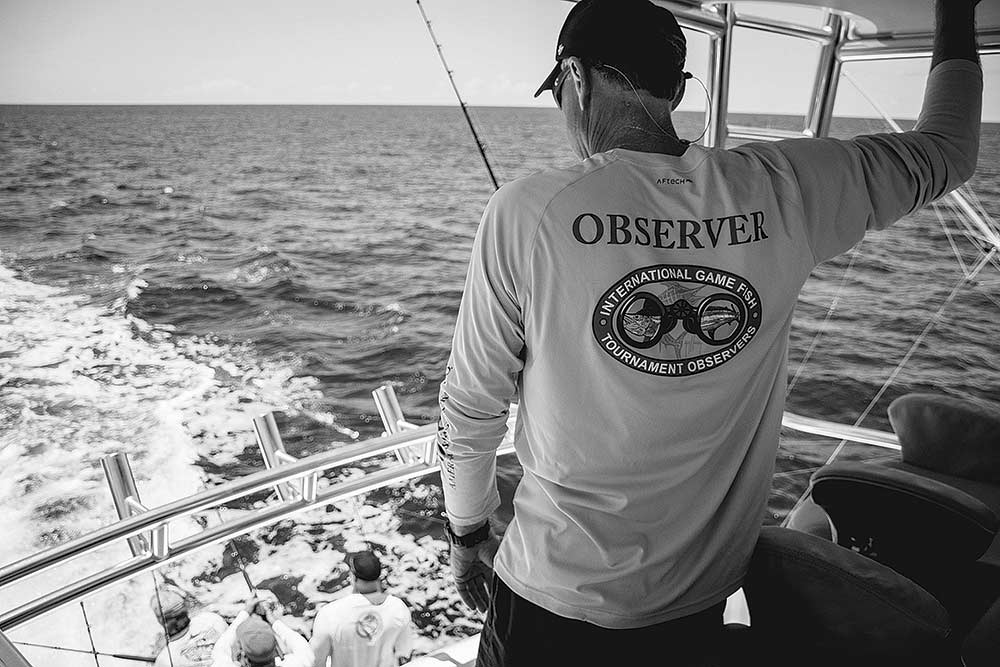
“Technology has changed over the years and we’ve evolved to keep up,” says Bert Merritt, the MGCBC’s co-tournament coordinator. He has been working with tournaments for the past 40 years. “We started with a simple spreadsheet but have spent hundreds of hours programming and coding our scoring software for speed and accuracy specifically for our event. Integrity is crucial. We want to make sure that people who are giving us all that money are comfortable, and that there are no issues.
“We’ll take in $2 million and reconcile it in one day, compared to what some businesses might do in a year. We couldn’t do it without a really good team,” he says. “Everyone is multi-talented. They count money and register boats and then offload fish, enter data and score. We have a crew of 30 strong at the scales and another group handling merchandise sales. Dr. Jim Franks has another team collecting fish samples for important research data. The marina crew pumps fuel and delivers ice. Everyone has to be flexible and ready to adapt. A lot of details go into this one week, from organizing to advertising, socializing to telling fish lies. We’ve pulled it off for 21 years now, so we’ve got the formula down pat.”
Endless Details
Sponsorship is another critical element for tournaments to be successful. Sponsors help underwrite fixed costs, subsidize meals and beverages, donate products and add to the experience with displays and interaction with contestants.
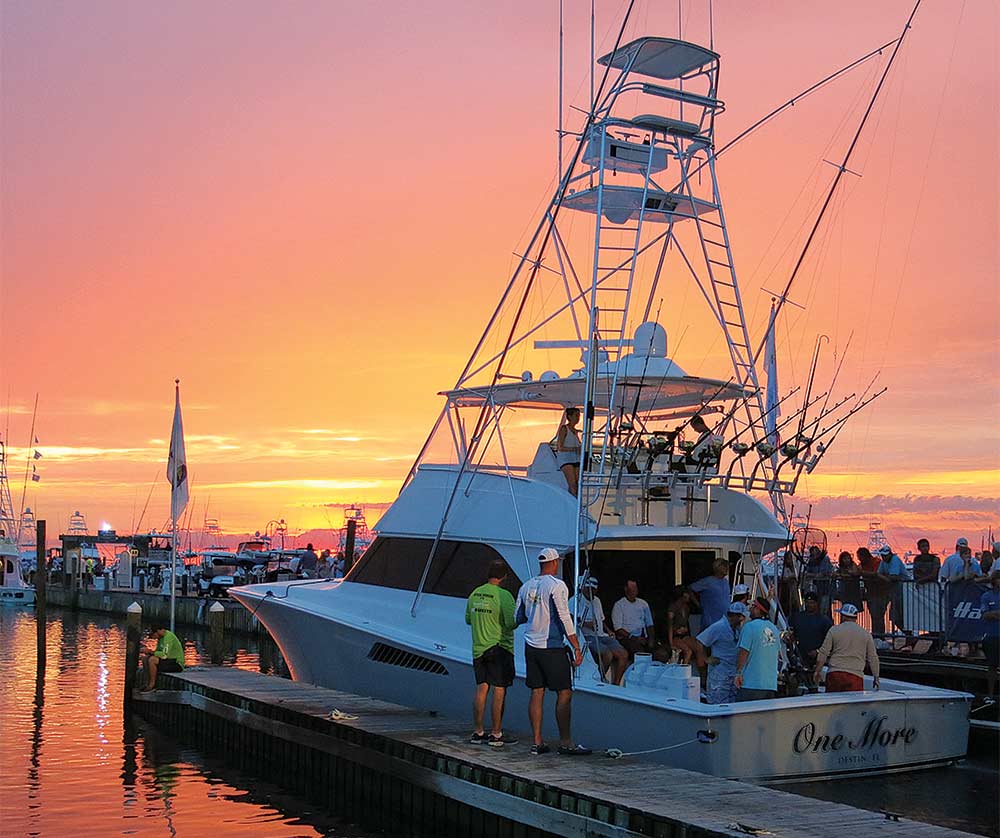
Soliciting sponsors — and keeping them happy — is one of the more demanding jobs an event coordinator faces, says Heather Maxwell, tournament director of the Pirate’s Cove Billfish Tournament. She volunteered for eight years, then served as director for another eight before taking a break. She returned five years ago and has only one part-time assistant, relying on 60-plus volunteers and a temporary staff to run the event every August. She also directs the Alice Kelly Memorial Ladies Only Billfish Tournament right before the PCBT.
“I work on the tournament year-round but increase to 15 hours a day from the Fourth of July through mid-September,” Maxwell says. “If you don’t have the sponsorships, you won’t have an event. It’s important the sponsors are as happy as the anglers. But they won’t sell a ton of product,” she cautions. “Tournaments aren’t boat shows; they are about building relationships. Sponsors are sold once and after that they have to sell themselves on renewals. It’s also important to realize that basically one team is the big winner, but we have to make sure all the other teams are happy, too. It’s a simple philosophy.”
Weigh, Score, Repeat
The work doesn’t end once the competing boats are offshore, either. Catch logs are updated constantly and by the time the weigh scales open, a crackerjack team goes to work in a choreographed drill that makes hoisting thousands of pounds of cold, wet, slimy finfish look like the conveyor belt at a UPS shipping hub.
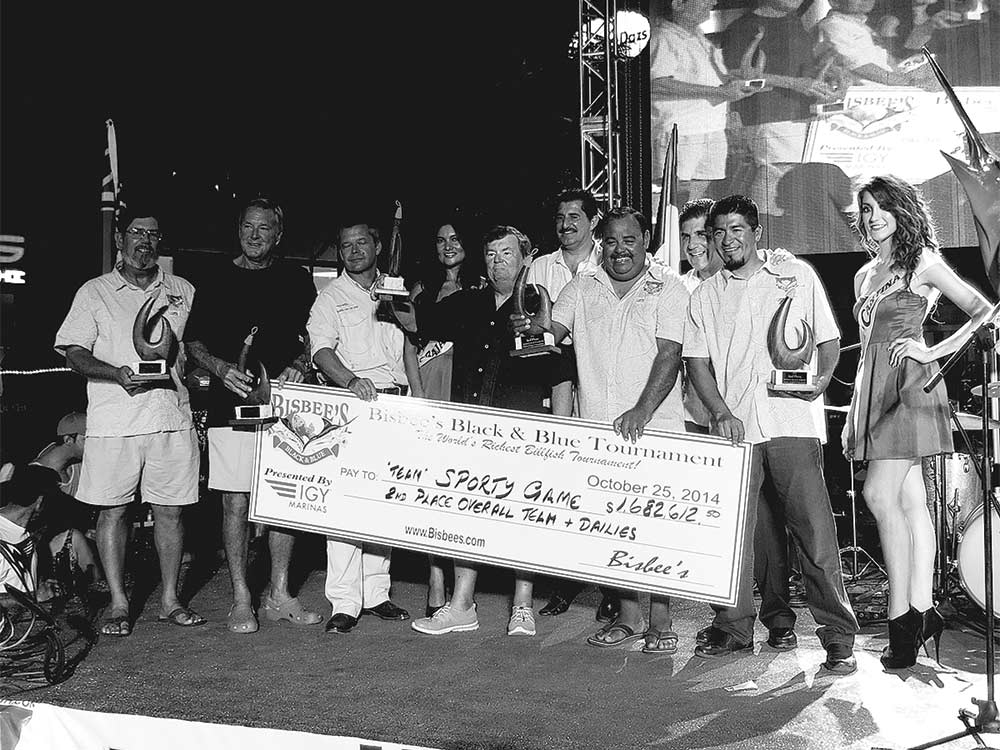
Jack Teschel is the weighmaster for the MGCBC, having recorded the all-time Gulf record 1,054.6-pound blue marlin in 2002. He also works the Bisbee’s Cabo events and has guided every weigh-in throughout the Emerald Coast Blue Marlin Classic’s 15-year history. The ECBC all-time record was 114 fish weighed in a single night and the bone-tired crew finished just before 1 a.m.
“The key to a smooth weigh station is synchronization,” he explains. “Everybody needs to be on the same page, from handling to weighing and scoring the fish.”
Before a blue marlin is offloaded, Teschel boards the boat and does a preliminary measurement to make sure the entry meets the minimum length. A dozen burly fish-handlers then wrap a guide rope around the fish’s bill and the marlin is carefully eased out the boat’s transom door and into the water.
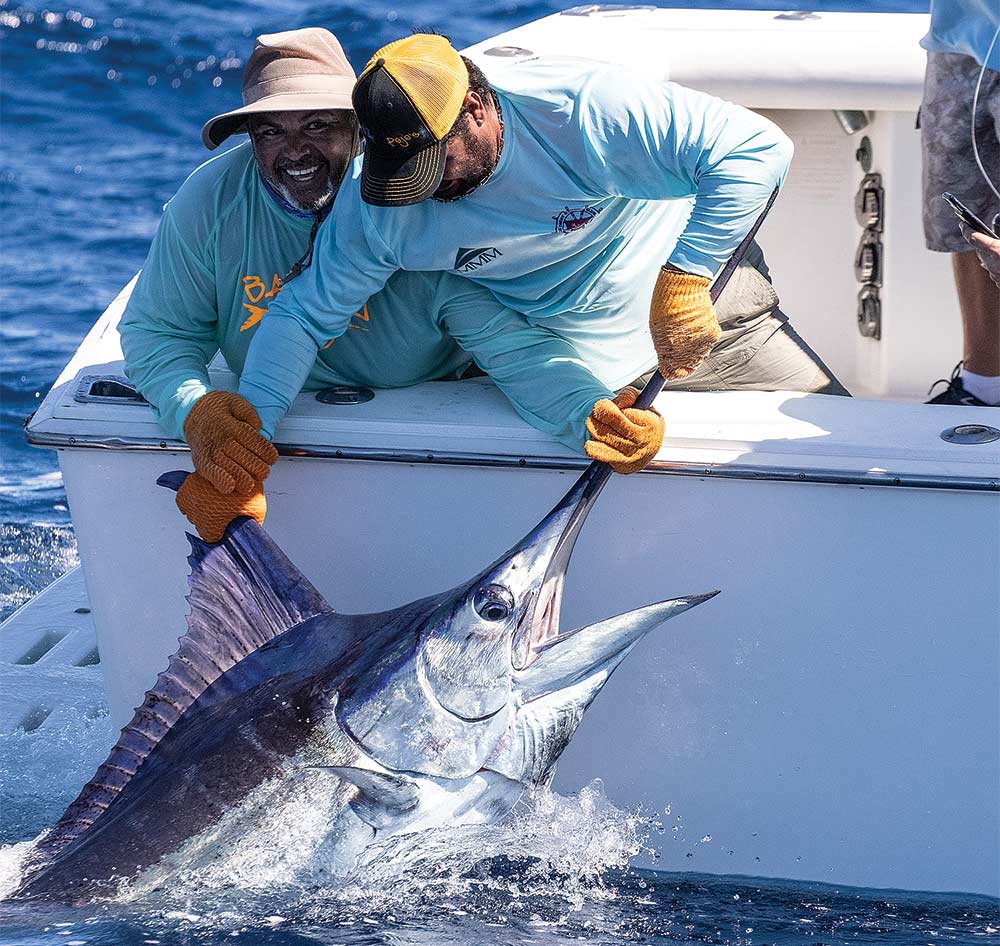
The layout at the ECBC is unique so participants protect the catch from damage by floating the fish to a submerged ramp. A second official measurement is taken and the tail tag or angler data information card is turned in for the photo display board before it goes to live scoring for updates. Another group of staffers then enters the information for the Jumbotron leaderboard, video verification and the tournament smartphone app.
Video judges watch hours of footage to verify the species and proper catch of billfish released. All those standings are then passed on to tournament control for the official scoring. The scale used to weigh the fish is certified every year by the System Scale company. Certification is within one-tenth of a pound up to 2,000 pounds. There are redundant back-ups to each component and all the equipment is thoroughly cleaned and stored in a climate-controlled environment afterwards. Two different tail ropes are used to ensure a safe connection.

Fun Behind the Scenes
It’s not strictly all work at tournaments, though. Each one has its share of strange incidents, funny anecdotes, special moments, frivolity and romantic liaisons. The MGCBC’s sponsor pub crawl in downtown Ocean Springs, Mississippi — held the first night the tournament boats are offshore and complete with a Mardi Gras tractor and police escort — is legendary for its wild antics. Merritt also recalls the hotel fire alarm going off in the wee hours one year and the weigh-in crew assembling in the hotel lobby clad only in their pajamas and underwear. Maxwell remembers a deserving outcome for a PCBT charity raffle another season.
“Jimmy Robinson has been volunteering since 2003 and one year we had a Harley Davidson motorcycle donated as a raffle prize,” she recalls. “Jimmy rode that thing up and down the docks all week long, selling tickets to benefit The Billfish Foundation. When the drawing was announced, he was the winner. It was so fitting. That’s one of my all-time favorite memories.” A similar incident occurred last year at the VBBT when Szilagyi and his wife won a custom golf cart during a charity-benefit drawing.
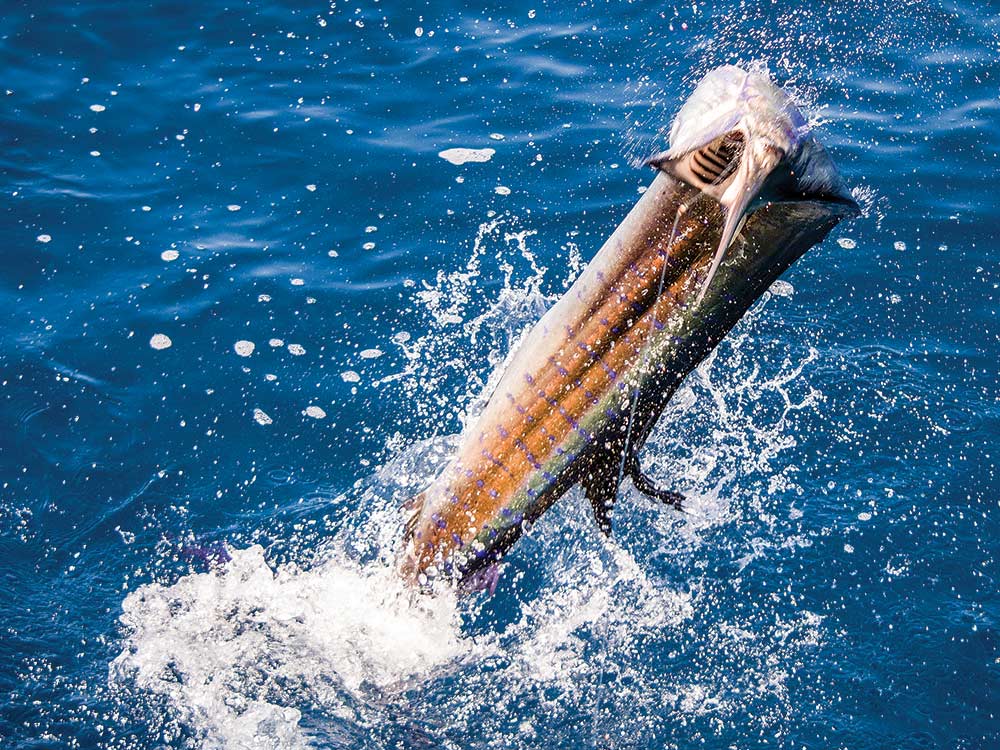
Once, the unique terminology associated with billfish tournaments led to a case of mistaken comprehension by a first-time PCBT volunteer. The young woman thought a “lay day” was the time the boat crews took off for some physical R&R instead of just a break from fishing.
Shenanigans and practical jokes are rampant behind the scenes, too. Staff golf carts constantly disappear, especially around closing time at the marina bars. Some even end up as temporary artificial reefs. Teams have returned from the day’s fishing to find every piece of furniture in the hotel room stacked outside on the balcony.
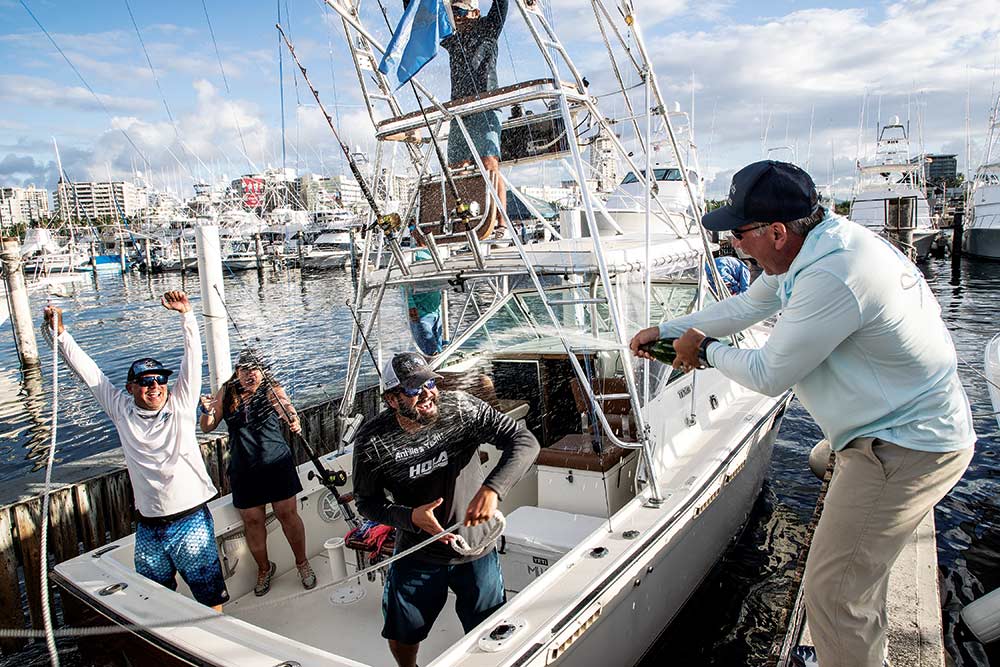
A well-known tournament director (whose initials are W.B.) was duct-taped to his bed one night after passing out from a hard night of partying. That same individual also discovered a bed full of green coconuts after pulling back the covers following another late-night return to his hotel room.
Read More Tournament News Here.
“We work with tournaments because we love the sport and the people involved,” Brakhage explains. “Most outsiders don’t realize how much work goes into making one successful. They’re just like other major sporting events like the Masters golf tournament or a NASCAR race. The goal is to make it as easy as possible for everyone involved and to also have fun while we do it.”
